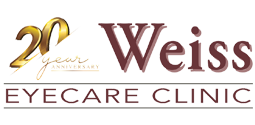The field of eye care has come a long way in understanding and treating dry eye. There were limited treatment options in the past, but today, there are many ways to manage this condition.
However, finding the proper treatment can be a process of trial and error. That is because dry eye causes and triggers can vary from person to person. Eye care professionals and patients must work together to identify the potential causes and explore different treatment options.
What Is Dry Eye Syndrome?
When the changes in the tear production process result in either a deficiency in the tears produced or an excess of tear evaporation, it can lead to dry eye disease. That is because there is insufficient fluid in tears to moisten the eye’s surface. That leads to dryness and increased saltiness of the tears, causing inflammation and the development of symptoms.
If left untreated, chronic dry eye disease can have severe consequences for the eyes’ health. It can lead to tissue damage and even corneal scarring. This damage can result in blurry vision or, in severe cases, vision loss. The impact of dry eye syndrome on your quality of life can be significant.
One study suggests that living with chronic, mild to moderate dry eye disease can reduce your quality of life to a similar extent as breaking a hip due to the pain and physical limitations it causes.
How To Manage Dry Eye Syndrome
Warm Compresses
A warm compress on your eyes can help loosen and remove accumulated oils on your eyelids. That can improve tear quality and reduce dryness. To use this management option, immerse a clean washcloth in warm water, squeeze it out, and lay it on your closed eyelids for several minutes.
Artificial Tears
These are eye drops formulated to lubricate the eyes and temporarily relieve dryness. They are available in various formulations, including those that mimic natural tears and others containing additional ingredients to provide moisture and lubrication. They are available with a prescription from an eye doctor or over-the-counter.
LipiFlow®
LipiFlow® uses heat and gentle pressure to unclog the oil-producing glands in the eyelids. The meibomian glands can become blocked due to various factors, including changes in the composition of the oils they produce and inflammation. LipiFlow can improve tear production and reduce dryness by unclogging the glands.
Low Level Light Therapy (LLLT)
Low Level Light Therapy (LLLT) is a non-invasive treatment that uses specific wavelengths of light to stimulate cellular activity. One of the ways that LLLT is used to manage dry eye syndrome is by increasing blood flow to the eyes and promoting tear production. A device emitting specific wavelength of light is placed close to the eye for a certain period of time.
BlephEx
BlephEx is a medical device used to remove excess bacterial, debris, and meibomian gland dysfunction (MGD) from the eyelids. It is a procedure that can be performed by an eye care professional in the office. It is a gentle, non-invasive procedure that uses a micro-sponge to remove debris and bacteria from the eyelids. This can help to improve the quality of the tears and reduce symptoms of dry eye syndrome.
Eye Ointments
These are thick, lubricating ointments that can keep the eyes moist. They can be especially beneficial for those who experience nighttime dryness and discomfort. Although they are more effective than artificial tears at relieving dryness, they can also cause blurry vision after use.
Punctal Plugs
These are small plugs inserted into the tear ducts. They aid in retaining moisture in the eyes by preventing tears from evaporating too quickly. They can be temporary plugs that dissolve over time and are removable if necessary or permanent plugs made of silicone or collagen and are not removable.
These options can help alleviate the dryness, discomfort, and other symptoms caused by this condition. It is critical to collaborate with an eye care professional to determine the best treatment option for your specific needs and to monitor its effectiveness.
For more on dry eye syndrome, visit Weiss Eyecare Clinic at our office in Watertown, South Dakota. Call (605) 882-0808 to book an appointment today.



